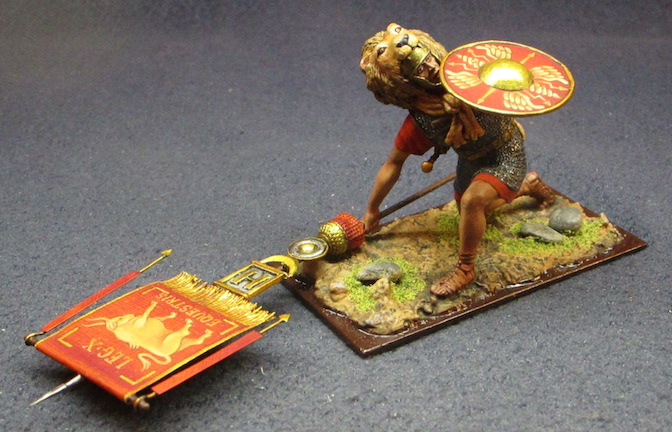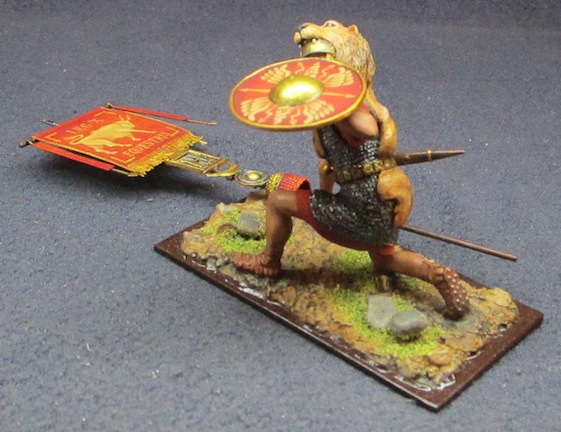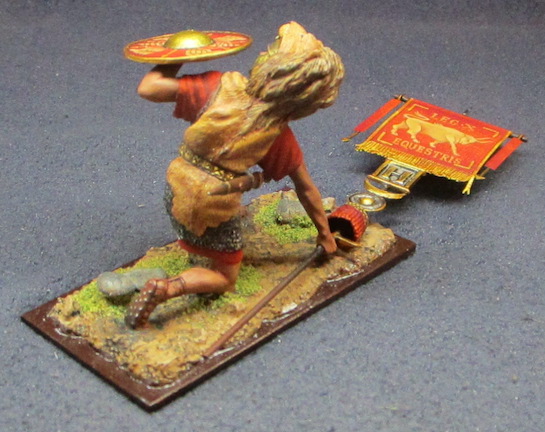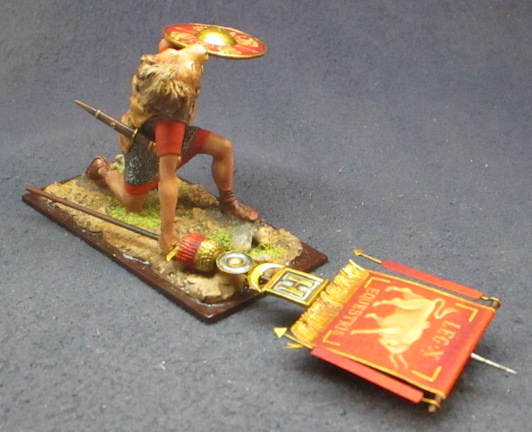X Legion Signifer


An incident in 58 BC describes Casar's confidence in the 10th: Caesar agreed to parley with one of the German kings with the stipulation that each side should only bring their respective mounted escorts. Caesar, not totally trusting his Gallic cavalry, had them demount and then gave their horses to the infantrymen of the 10th, whose dedication to him he knew he could always rely on.
After Caesar the 10th would serve brilliantly in Macedonia, Armenia, and the Middle East. Indeed it was the 10th under legate Flavius Silva that defeated the Jewish extremists at Masada, making military history with their resourcefulness.
During the reign of Hadrian in the early stages of the Second Jewish revolt, the 10th suffered extremely high casulaties. The emperor was forced to replenish the ranks of the 10th so quickly that sailors wre seconded from the fleet with the promise of citizenship with the note on their discharge "indulgentia divi Hadriani," which translates to "from the kindness of the divine Hadrian." The 10th would remain in the Middle East through to the fourth century, always providing outstanding service and affirming their reputation of greatness.
Each century of a legion had a standard which displayed the unit's identification. Aditionally the unit standard would include the unit's awards and battle honors (philarae) posted on the standard staff. The junior officers who carried the standard were called signifiers. All the standard bearers wore animal skins over their armor to differentiate them. When units of a legion would serve on detached duty with other legions their legion flag (vexilla) would be carried by their signifier.



 Up
Up